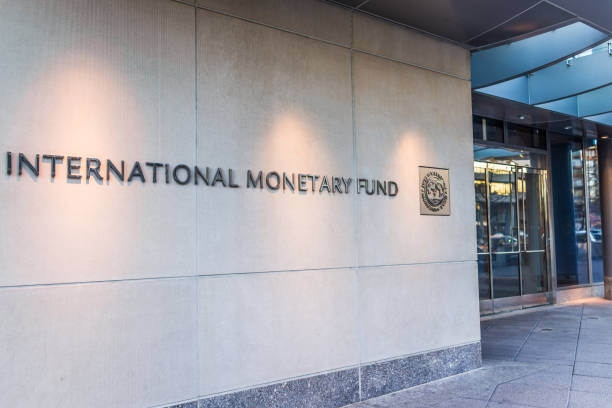
On Tuesday, the International Monetary Fund (IMF) slightly raised its global economic growth forecast, enhancing the projections for the United States and China, the globe’s primary economic powerhouses. This revision was attributed to a quicker than anticipated reduction in inflation rates.
Global Economic Growth: An Upward Revision
Pierre-Olivier Gourinchas, the IMF’s chief economist, unveiled that the latest World Economic Outlook hints at an approaching “soft landing.” Despite this, he noted that both overall growth and global trade figures are trailing behind the long-term average.
“The global economy is showing impressive resilience, moving steadily towards a ‘soft landing’ scenario where inflation falls and growth remains stable. However, we are experiencing a slower expansion phase, potentially facing future disruptions,” explained Gourinchas.
This optimistic forecast is buoyed by robust private and public expenditure, a growing labor force, recovery in supply chains, and reductions in energy and commodity prices, all amidst stringent monetary policies.
For 2024, the IMF now expects the global economy to grow by 3.1%, a slight increase from its previous prediction, with a steady growth rate of 3.2% anticipated for 2025. This is compared to a pre-pandemic average growth rate of 3.8% from 2000 to 2019.
However, global trade growth projections remain subdued at 3.3% for 2024 and 3.6% for 2025, significantly below the historical average of 4.9%. This slowdown is partly due to around 3,000 trade restrictions implemented in 2023.
Inflation and Economic Forecasts
The IMF maintained its previous inflation forecast for 2024 at 5.8% but reduced the 2025 prediction slightly from 4.6% to 4.4%. When excluding Argentina, which is currently experiencing a spike in inflation, the global rate would be considerably lower, as per Gourinchas.
In advanced economies, average inflation is expected to drop to 2.6%, achieving the central bank’s target of 2% by 2025. Emerging markets and developing economies will likely see inflation rates of 8.1% in 2024, decreasing to 6% the following year.
Oil prices are projected to fall by 2.3% in 2024, a sharper decline than previously forecasted, with a further decrease of 4.8% expected in 2025.
Geopolitical Concerns and Commodity Prices
The IMF has flagged concerns about potential commodity price surges due to geopolitical tensions, such as ongoing attacks on shipping in the Red Sea, which could extend the period of tight monetary conditions. However, Gourinchas believes the economic impact of these incidents remains limited for now.
Regional Growth Projections
Significant upgrades were given to the U.S., with a 2024 GDP growth forecast of 2.1%, up from 1.5%. This enhancement is credited to robust fiscal support and consumer spending, although concerns about certain domestic subsidies violating global trade rules were raised.
Conversely, the Euro area’s growth forecast was downgraded, with only a 0.9% growth expected in 2024 and 1.7% in 2025. Germany, Europe’s largest economy, is projected to grow by just 0.5% in 2024.
China’s economic growth is anticipated to be 4.6% in 2024, reflecting substantial fiscal support and a smaller-than-expected downturn in the property sector.
Central Bank Policies and Interest Rates
The IMF anticipates the U.S. Federal Reserve, the European Central Bank, and the Bank of England to maintain current interest rates until the latter half of 2024, with a gradual decline expected afterward. The Bank of Japan is advised to stay prepared for potential rate hikes if inflation escalates.
Emerging markets and developing economies overall are predicted to grow by 4.1% in 2024, with an upgrade attributed to Russia due to increased military spending. Argentina’s negative growth has led to a lower growth forecast for Latin America and the Caribbean, expected to fall to 1.9% in 2024.
The global economic outlook presents a balanced mix of potential risks and opportunities, with the possibility of lower fuel prices offsetting the threat of a broader conflict in the Middle East. Gourinchas remains cautiously optimistic, acknowledging the absence of previously anticipated disinflationary risks.
Featured image credit: Krblokhin via Getty Images
